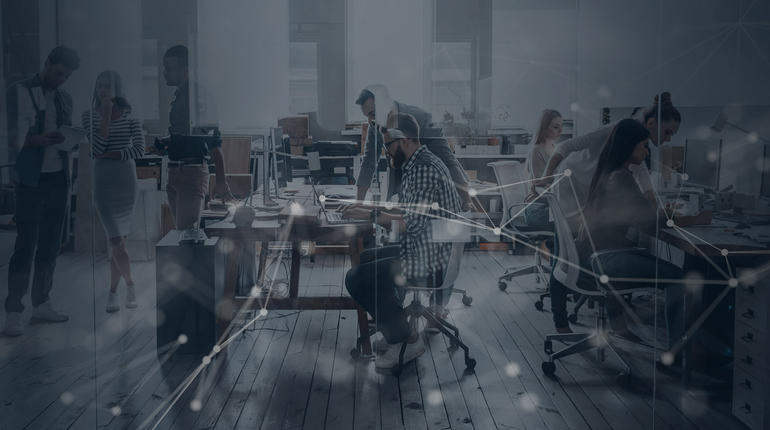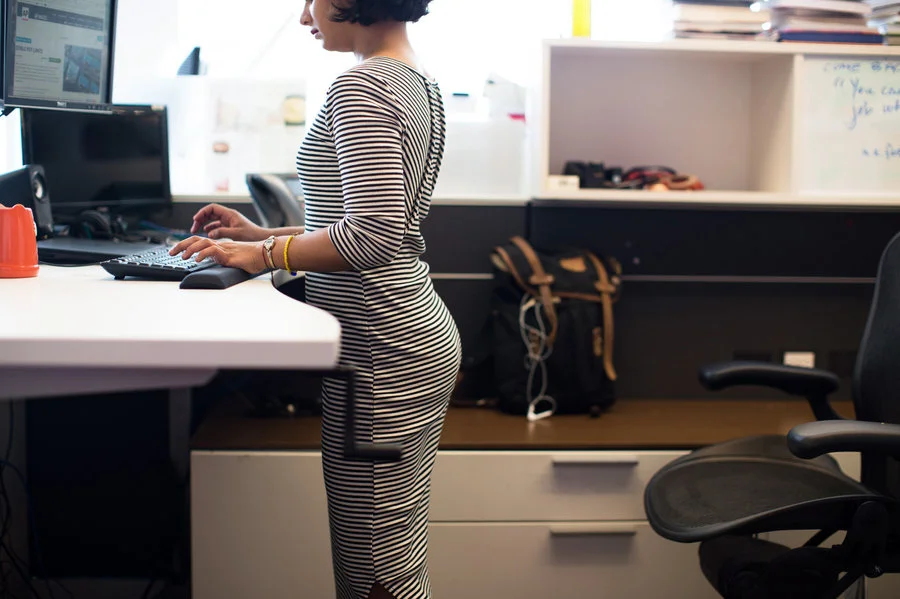Building an effective open floor plan office requires more than putting employees in one big room with standing desks. Here are best practices and potential pitfalls every company should understand when creating an open workspace.
How to reboot an activity based working project that has ground to a halt
In an activity based working reboot the mission is to identify what has got stuck and how-to re-start.
NEXT-GENERATION SPACE DESIGN: WHAT GOES INTO OUR “SECRET SAUCE”?
In order to figure out how to design these future environments, we must start by exploring whywe design them.
Using Workplace Data to Create Connected Communities
Workplace data is being put to use by corporate service groups (such as Human Resources and IT) to provide a better employee experience and empower the businesses that are their customers.
KEY FINDINGS FROM THE INSTANT GROUP’S RESEARCH: “THE MARKETPLACE FOR FLEXIBLE WORK”
Research by The Instant Group and HLW found that those using flexible workspace are enjoying higher levels of productivity, better business opportunities, and improved work environments.
A new company is taking remote work’s flexibility to the extreme
About time we simply accepted that coworking and flexible working are the new normal
The WeWork phenomenon underscores the demand for agile working models, giving start up businesses exactly what they want as the trend become absorbed into mainstream corporate culture.
3 ways the 'smart office' will change the future of work
Companies have focused on making offices more comfortable and collaborative, but they still need to get over long-standing tech hurdles. That's where the smart office comes in.
Want millennials to stay put? Give them ergonomic chairs
With millennials now comprising over 65 percent of the workforce, offices are being designed to adapt to their changing attitudes.
How to Develop the Workplace Culture You Want Through Effective Workplace Design
The moment either a visitor or an employee first steps into a company’s workplace, they learn about two things: the company’s business focus and the culture of its people, both of which are reflections of one another. What ties the two together is the workplace itself.
Remote work is “the new normal”
We know the number of freelancers is on the rise, but more than half (55%) of hiring managers agree that remote work among full-time permanent employees is becoming more common, too.
How employers can design workplaces to promote wellness
Rather than promoting these wellness programs, companies should instead design the workplace itself to support wellness.
Are standing desks better for you? Not so fast
Go ahead and take a seat for this one. Remember that time you read an article about how sitting all day at a desk will kill you and not just in a dead-on-the-inside way? Well, it turns out that standing all day may not be so great either.
Five leadership megatrends changing the workplace
The biggest worry on executives' minds around the world isn't recession, global competition, or labour relations. Rather, a report shows that what's keeping C-level executives up at night is their people strategies.
Ten Things Agile Teams Need to Know
To better understand Agile work and to support our own Agile journey, Steelcase has built a behavioral prototype of spaces to serve the needs of Agile workers.
Why the "Cultural Fit" Doesn't Fit
The more you think about fitting in, the less sense it makes. Few people really want to be a part of a groupthink session, or to line up exactly with existing employees and company norms.
Measuring What Matters
The recent WE Hub Chicago event, focused on “Measuring What Matters”, gathered a panel of industry professionals to discuss how workplace analytics are becoming critical evidence for organizations to maximize human potential by evolving their workplace.
Study: Standing desks could be harmful to your productivity . . . and your health
Thinking of getting standing desks for your employees … or even for yourself? You might want to think again.
The global impact of biophilic design in the workplace
Although it has been proposed that this desire for a connection with nature is the result of an anti-urban bias combined with a romantic view of nature, environmental psychology research tells us that being connected to nature, is in fact, an adaptive human function that allows for, and assists with, psychological restoration.
Office Design – Moving from Lean to Green
Green offices incorporate natural elements such as daylight and plants to reduce stress levels, which ultimately leads to happier and more productive employees.

























